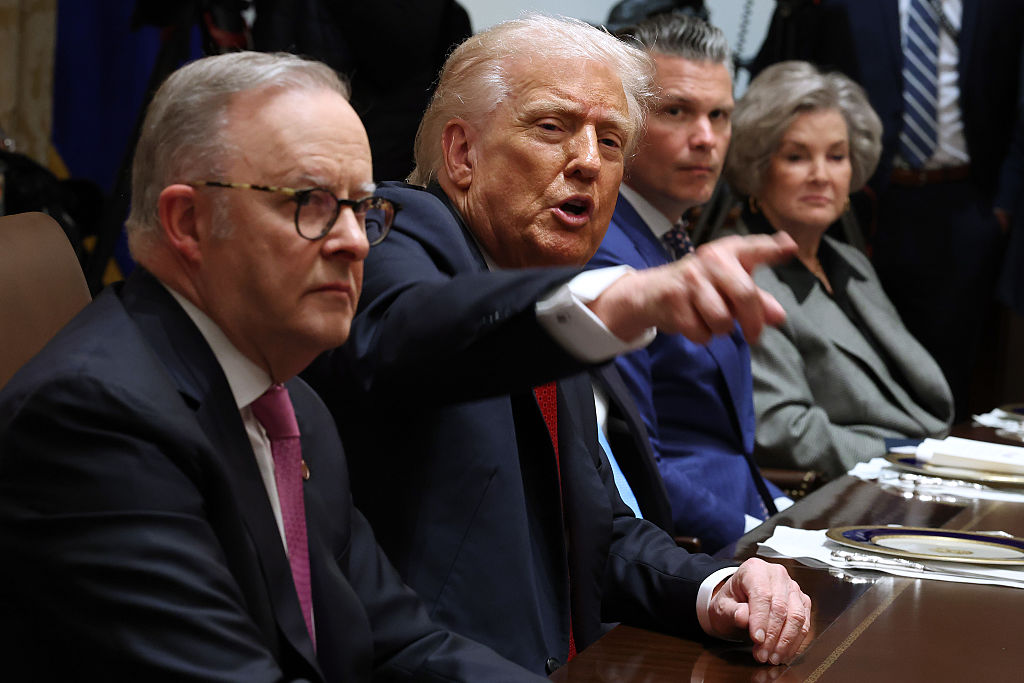
WASHINGTON, DC - OCTOBER 20: U.S. President Donald Trump calls on reporters during a meeting with Prime Minister of Australia Anthony Albanese (L), Secretary of War Pete Hegseth and White House Chief of Staff Susie Wiles during a bilateral meeting in the Cabinet Room of the White House on October 20, 2025 in Washington, DC. Albanese is visiting the U.S. Capital to meet with President Trump and later visit the Pentagon. (Photo by Anna Moneymaker/Getty Images)
The United States and Australia have announced a joint investment initiative exceeding $4.6 billion (US$3 billion) aimed at reducing China’s dominance in the production of rare earth elements. This collaboration, unveiled by President Donald Trump and Prime Minister Anthony Albanese, focuses particularly on gallium, a strategic material that has been recognized as a significant risk for decades but is only now being actively addressed.
The U.S. Department of War is partnering with the Australian government to develop a gallium refinery, which will have the capacity to produce 100 metric tons annually. This facility will be co-located at Alcoa’s Wagerup alumina refinery in Western Australia, marking a significant step toward securing supply chains for this critical material.
Strategic Importance of Gallium
Gallium is essential for various high-tech applications, including semiconductors, solar panels, and LED technology. Its strategic importance has escalated as global demand for advanced electronics continues to rise. Currently, China dominates the gallium market, controlling a significant portion of the production and supply. This dependency raises concerns about supply chain vulnerabilities, particularly as geopolitical tensions increase.
The joint investment by the U.S. and Australia seeks to establish a more resilient supply chain for gallium, thereby reducing reliance on Chinese sources. This initiative aligns with broader efforts by Western nations to secure critical minerals deemed vital for national security and technological independence.
The announcement comes as both governments recognize the necessity of diversifying their sources of rare earth elements. The coordinated effort reflects a growing awareness of the competitive landscape in the global market for these essential materials.
Economic and Political Implications
Beyond addressing supply chain concerns, this investment signifies a deepening of economic ties between the United States and Australia. By collaborating on critical mineral production, both countries aim to bolster their economic resilience while simultaneously countering China’s influence.
The $4.6 billion investment represents a significant commitment to fostering innovation and technological advancement within the allied nations. The U.S. Department of War’s involvement underscores the strategic military implications of securing a reliable supply of gallium.
Furthermore, this initiative could have broader implications for the global rare earths market, potentially influencing pricing, availability, and the competitiveness of non-Chinese producers. Experts believe that increased production capacity and diversification of supply sources could lead to a more balanced market.
As this partnership unfolds, it will be essential to monitor developments in the gallium sector and the impact of these investments on global supply chains. The U.S. and Australia aim not only to enhance their own positions but also to contribute to a more stable and competitive environment in the rare earths market.






